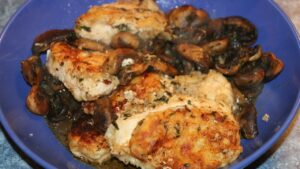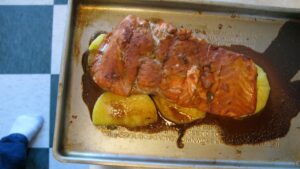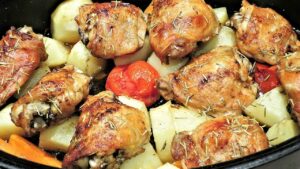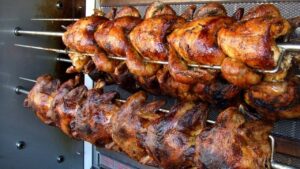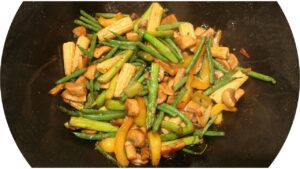What is Sautéing?
Sautéing is derived from the French verb “Sauter” which refers to the English word “jump or jumping”. This cooking method is mainly done with a dry heat process which involves the usage of less fat on a hot pan.
You can simply toss the ingredients as needed. The main rationale is to toss food to brown the surface area on a greased pan.
It is necessary to make the pan hot and sizzling so that when the ingredients are added they just get cooked in the surface area with a little bit of oil or butter. This oozes out the flavors from the food.
The ingredients need to be exposed to the heat source and the utensils should be good for it. Stir the ingredients often to prevent overcooking.
Key Takeaways
- Sauteing is a dry heat process done on a relatively highly heated pan.
- Almost a fat-free process of cooking food with perfectly cut vegetables
- One must know the temperature of all the food items prepared.
Understanding Sautéing
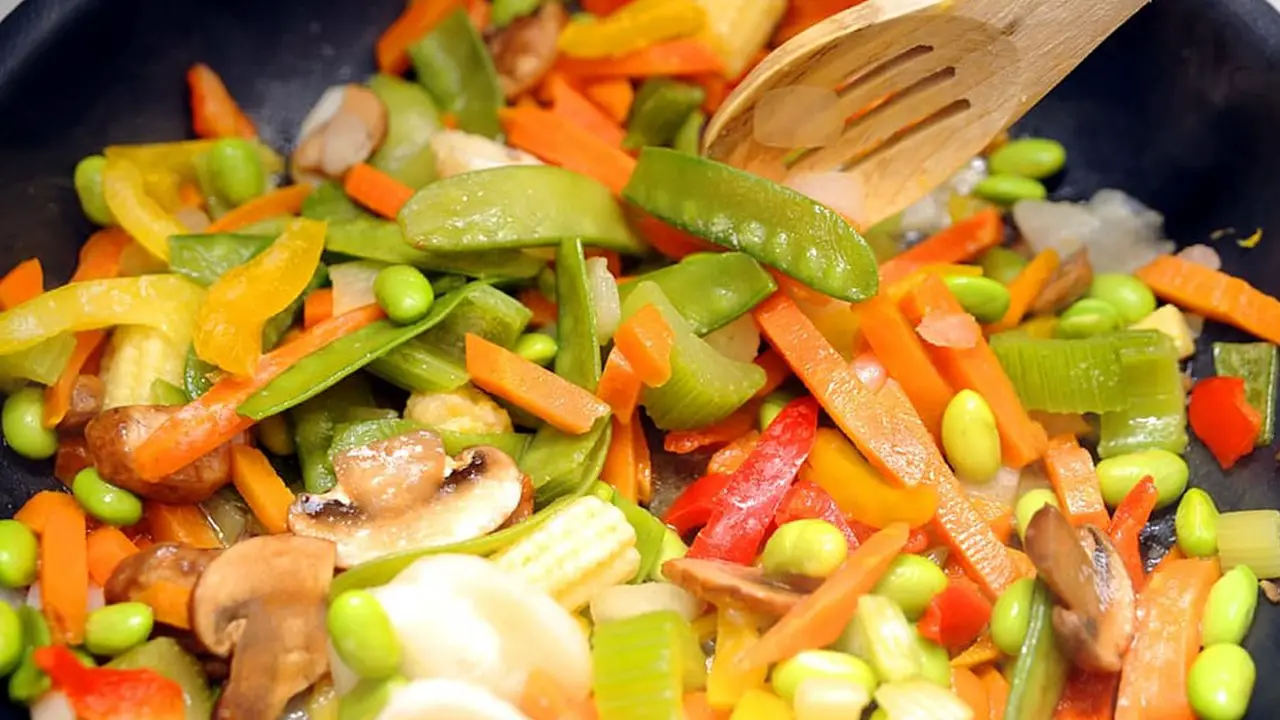
There is a Latin word called “saltare” which then crossed over to French and English dictionaries in the mid-19th century. You can check that in 1800 there was the French dish Sauté d’agneau.
In fact, in the year 1822 The Cook’s Oracle and Domestic Cookery in 1923 also you can get examples of sautéing. In 1827 there was a cookbook in the English language called “The Art of French Cookery” where you can check out some of the easy examples of sautéing.
Later this cooking style spread to American and British styles of cooking.
During the sautéing technique, you can check out that there is a flavourful crust that is getting coated over the food.
You can check out the browning coating that is simply created over the food which is initially done over the hot pan.
Thus you need a pan that can touch the heat source very nicely so that it gets hot and it can be cooked without any kind of steam or in its juices.
The meat starts to get stewed when it is cooked with liquid but in the sautéing, this is not required.
It does not require to get deep brown but brownish at the same time and it should not be crowded in the pan.
Sometimes sautéing is considered pan frying but actually, it is cooking the food with less oil on a very hot pan with a tasty result.
There are some incredible examples of this versatile culinary method. It is a deal for preparing tender fish or meat, it is thinner with vegetables.
You are getting a guaranteed texture with the jumping technique of cooking done at a higher temperature browned consistently.
Importance of Sautéing
Bringing out the Flavors
If you want to bring out all the flavors from a dish easily and quickly then make sure you are picking out this technique. The importance of sautéing is bringing out the flavors with less oil.
This is ideal for the presentation, retaining the food value locked and oozing out the flavors instead.
Keeping the Nutrients
The nutrients of the food and ingredients are simply kept intact with the help of this sauteing technique.
The freshness and the crispiness of the food remain infused within it. Even after cooking you can check out the goodness of each of these ingredients.
Minimal Food is Required
The fat is just required as the name. It is only used to grease the pan or the food itself. It is considered much healthier than frying itself. The fat used here gets absorbed by the food thus it is better than frying.
Versatile Dishes
Sautéing is done with versatile dishes. You can have anything with it, even the boiling vegetables can be sautéed to make different types of dishes that are healthy and light at the same time.
You can bring out new flavors from it and make it wonderful and perfect at the same time.
Integrate More Veggies
More and more vegetables can be cooked with different ways of sauteing and included within your diet.
When the vegetables are sauteed they ooze out an extra flavor which gives you a wonderful taste that makes your food healthy and perfect.
One Pan Dish
It makes a dish into one pan or wok. You can simply make a single dish with the help of a pan or work just by sauteing the veggies or meat and even fish. But make sure the pan is constantly hot.
What Are the Steps of Sautéing?
Essentially you just need three main things for sauteing:
- A skillet or wok or pan.
- Some fat that can be oil or butter
- A spatula or sometimes even a spoon
There are different types of sauteing mediums where you can cook the food following the sauteing.
A sauté pan, skillet, or even a wok can be your medium. After selecting the cooking equipment then you must think of the fat medium.
Whether it can be butter or oil or even fortified oil. After selecting the pan then you can start with the following steps.
Heat the Pan
The first step is to heat the pan before you add the oil. You must keep the pan on medium to high heat.
Make sure you use a non-stick pan otherwise you keep track of the veggies and the oil.
The ingredients and vegetables are chopped in the proper size and easily manageable. Ensure that the vegetables are cut to an appropriate size for sautéing.
It helps to cook faster. If you are using a pan made of stainless steel then you can add some water too and when the water withers away then the pan is ready.
Add Oil to the Pan
When the pan is ready then you can add the fat which can be oil or even butter. Depending on the recipe you can choose the fat.
You can even add olive oil if you want. Just remember that different types of fat burn or get heated up at different temperatures.
For example, different oils have a smoking point of 375-450 °F and on the other hand, butter has 350 °F.
Add the Food
When you are adding the food make sure that you have a pan with a space that can easily hold the vegetables and other items.
You can easily flip-flop the items if you have space. Make sure that you are aware of the recipe so that it is easy for you to understand when it is ready.
Regularly Stir Your Food
You can easily start stirring your food regularly. If you see that the ingredients and the fat start smoking then you better remove it from the heat.
But if you see that it’s not done yet then you can turn down the temperature a bit.
Flip the Food
When you are stirring then the main function of sauteing comes in which is you can flip the food so that the food can jump and again reside back in the pan. You can simply do it with the
Know When It is Done
You must taste your food and if you think it is done then stop cooking it more.
The rationale is to make the food 85% cooked so that the remaining 15% will be done when you have turned the heat off.
The formula of “keeping it a little bit undercooked” is a good one. For example, when you sauté the onion then make sure the crunchiness remains with it.
Drain the Extra Fat
You can keep the food on a paper towel and drain the extra oil from it. In that way, it will be great to make it perfect. This will make the food even healthier.
Seasoning
Finally, when the dish is ready then you can season it perfectly. You can season it with the required number of toppings and serve it hot.
Tips for Better Sautéing
Sauteing requires a good hand. You need to be careful and at the same time vigilant about the food that is properly sauté.
A balance Between the Heat & Fat
You need to keep a balance between the heat and the fat. You need to ensure that the food does not get overcooked or over-smoked. That means stirring it should not burn out.
Pan Selection & Heat Distribution
You must select a pan that is perfect for these types of sauteing. But remember that even a pan or skillet does have hot spots and colder spots.
So, when you are heating the pan make sure that the heat gets evenly distributed. In this way keep on heating the pan so nicely that the pan gets heated up evenly.
Right Temperature
The sauteing temperature differs from food to food oils smoke at 375-450 °F, butter smokes at 350 °F, steaks at 145°F, pork chops at 145°F, and chicken at 165°F. You need to know a little bit about it so that you can get the best of it.
Do Not Overcrowd Your Pan
Take the right side of the pan so that all the food gets enough space to sauté or flip over and over. You need to treat each food with the proper aspect. So do not overcrowd the pan.
Uses of Sautéing in Indian Cuisine
Sauteing is simply a technique where oil or fat is just used to grease the pan.
In Indian cooking the method of sauteing is used in cooked items like when you lightly sautéing the veggies to add to the rice or pulao, adding any kind of tempering with light oil is used to shallow cook the food that is being added.
In fact, you can check out the recipes with semolina, roasted nuts, etc. You need to sauté the ingredients lightly.
Questions & Answers
Which Food is Cooked by Sautéing?
Other than some of the exceptions more or less all foods can be sauteed. If you start with meat then small tender cuts without any connective tissues.
You can try it with chicken. Vegetables like peppers, zucchini, mushrooms, asparagus, green beans, onions, tomatoes, etc.
What is Vegetable Sautéing?
Sautéing is different from pan frying. You just need to make the vegetables look brownish and 85% cooked, that is the outer layer of the vegetables.
A little bit of oil is used to grease the pan and the vegetables are sauteed. Vegetables like sprouts, Brussels, cauliflower, bell peppers, zucchini, etc.
What Type of Heat is Sautéing?
Sauteing is a “dry heat” process. This method is being used over a sauteing pan with a high that is being distributed all over the pan. Relatively high heat is being used here to make the cooking.
Conclusion
Sauteing is simply a healthy way of cooking. If you want then you can also boil the veggies or even meat or other food and then try on sauté if you don’t want to have food undercooked.

